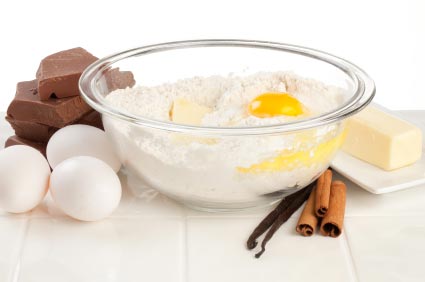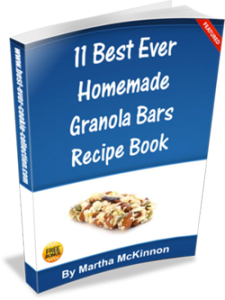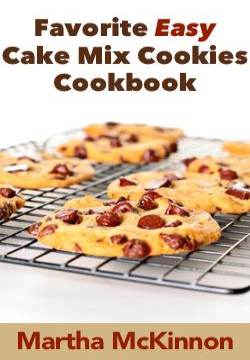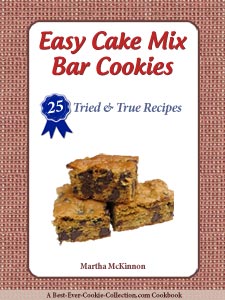Emergency Baking Substitutions
- Cookie FAQs |
- Making Perfect Cookies |
- Cookie Baking Conversion Charts |
- Cocoa Powder |
- How to Melt Chocolate |
- How to Make No Bake Cookies |
- How to Make Cookies Soft and Chewy |
- Emergency Substitutions
While most ingredients for cookie making can be found in most people's pantries and refrigerators, you can experiment with these ingredient substitutions if you're in a pinch and missing an important ingredient for your cookies.
And of course, it's always best to read through the recipe thoroughly before beginning so you can be sure you have the right ingredients on hand, as well as the correct amounts of each.
There's nothing worse than getting halfway through mixing your cookie dough and realizing you are without an important ingredient.
Be sure to use these sparingly as any substitution from the original recipe may affect the flavor and texture of your homemade cookie masterpieces!
Baking Ingredient Substitutions That Might Help In A Pinch
| If you don't have: | Substitute: |
|---|---|
| Apple pie spice, 1 teaspoon | 1/2 teaspoon ground cinnamon plus 1/4 teaspoon ground nutmeg, 1/8 teaspoon ground allspice, and dash of ground cloves |
| Baking Powder, 1 teaspoon | 1/2 teaspoon cream of tartar plus 1/4 teaspoon baking soda |
| Buttermilk, 1 cup | Sour milk: 1 tablespoon lemon juice or vinegar plus enough milk to make 1 cup (let stand 5 minutes before using); or 1 cup plain yogurt |
| Chocolate, semisweet, 1 ounce | 3 tablespoons semisweet chocolate pieces; or 1 ounce unsweetened chocolate plus 1 tablespoon sugar |
| Chocolate, sweet baking, 4 ounces | 1/4 cup unsweetened cocoa powder plus 1/3 cup sugar and 3 tablespoons shortening |
| Chocolate, unsweetened, 1 ounce | 3 tablespoons unsweetened cocoa powder plus 1 tablespoon cooking oil or shortening |
| Cornstarch, 1 tablespoon (for thickening) | 2 tablespoons all-purpose flour |
| Corn syrup, 1 cup | 1 cup granulated sugar plus 1/4 cup water |
| Egg, 1 whole large | 2 egg whites; 2 egg yolks; or 1/4 cup frozen egg product, thawed |
| Fruit liqueur, 1 tablespoon | 1 tablespoon fruit juice |
| Ginger, grated fresh, 1 teaspoon | 1/4 teaspoon ground ginger |
| Half-and-half or light cream, 1 cup | 1 tablespoon melted butter or margarine plus enough whole milk to make 1 cup |
| Honey, 1 cup | 1 1/4 cups granulated sugar plus 1/4 cup water |
| Milk, 1 cup | 1/2 cup evaporated milk plus 1/2 cup water; or 1 cup water plus 1/3 cup nonfat dry milk powder |
| Molasses, 1 cup | 1 cup honey |
| Pumpkin pie spice, 1 teaspoon | 1/2 teaspoon ground cinnamon, plus 1/4 teaspoon ground ginger, 1/4 teaspoon ground allspice, and 1/8 teaspoon ground nutmeg |
| Sour cream, dairy, 1 cup | 1 cup plain yogurt |
| Sugar, granulated, 1 cup | 1 cup packed brown sugar |
| Turbinado sugar (natural brown sugar), 1 cup | 1 cup granulated sugar |

Cookie Ingredients and Substitutions
Less Fat, More Applesauce
If you experiment with applesauce or fruit puree as a substitute for fat in drop or bar cookie recipes, replace no more than half the butter or shortening with the fruit product. The cookies will be moist and cakelike because the fruit holds moisture. Applesauce or fruit puree does not work in cutout or slice-and-bake cookies because it makes dough too soft to hold its shape.
High Altitude Cookie Baking
Cookies need less adjustment for high altitude than other baked goods. Start by increasing the oven temperature by 25°F and decreasing the baking time by a minute or two. If further adjustment is necessary, reduce the sugar by a couple of tablespoons. If a recipe calls for baking powder or baking soda, you may need to reduce the amount by 1/8 teaspoon. Make just one recipe change at a time and be sure to test bake your cookies one- or two-at-a-time.
What's the difference in these ingredients?
Butter versus margarine:
Butter is the first choice for cookies because it gives a rich flavor and consistent results. Stick margarine will work if it contains at least 80% fat. For best results, avoid low-fat, liquid, and soft spreads when making your cookies.
Pure vanilla extract versus imitation vanilla:
Vanilla extract comes from long, slender pods called vanilla beans. Circulating diluted alcohol through finely chopped vanilla beans makes pure vanilla extract. Imitation vanilla is an artificial flavoring made of synthetic flavors and coloring and is an inexpensive substitute for extract. For most uses, measure the same amount of imitation vanilla as you would pure vanilla extract.
Dark molasses versus light molasses:
Thick, dark, syrupy molasses is a byproduct of refining cane or beet sugar. When describing molasses, light refers only to flavor, not color or calorie or sugar content. Light molasses, also called mild-flavor molasses, comes from the first boiling of the refining process and is sweet in flavor. Dark molasses, from the second boiling, is not as sweet as light molasses but has a distinctive, robust flavor. Light and dark molasses can be used interchangeably. Learn a little more about molasses.
Evaporated milk versus sweetened condensed milk:
Evaorated milk is made by removing the water from whole milk. Sweetened condensed milk is milk that has had the water removed and then sugar added. They should not be used interchangeably in recipes.
Baking soda versus baking powder:
Baking soda is an alkaline leavening agent that is used in conjunction with acidic ingredients, such as buttermilk or brown sugar, to form bubbles of air that make cookies rise. Baking powder is not used in conjunction with an acidic ingredient in recipes because it already contains the acidifying agent (cream of tartar). Do not use these ingredients interchangeably for baking.
Liquid food coloring versus food coloring paste:
Liquid food coloring, usually available in just four colors - red, green, yellow, and blue - has a relatively low concentration of dye. Paste food coloring is highly concentrated and available in a wide variety of colors. Use less paste coloring than you would liquid coloring.
Back from Emergency Baking Substitutions to Making Brownies and Cookies
Back from Emergency Baking Substitutions to Best Ever Cookie Collection home





